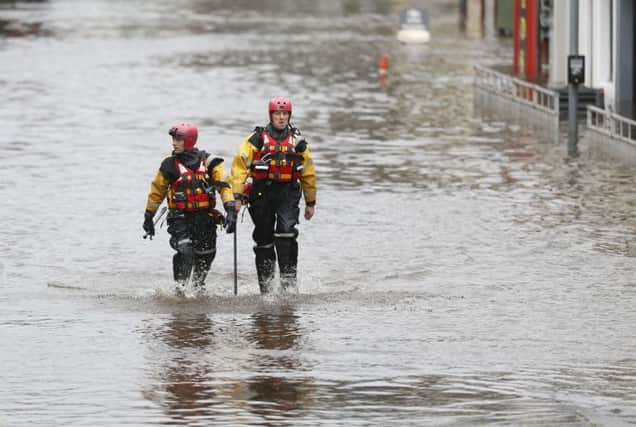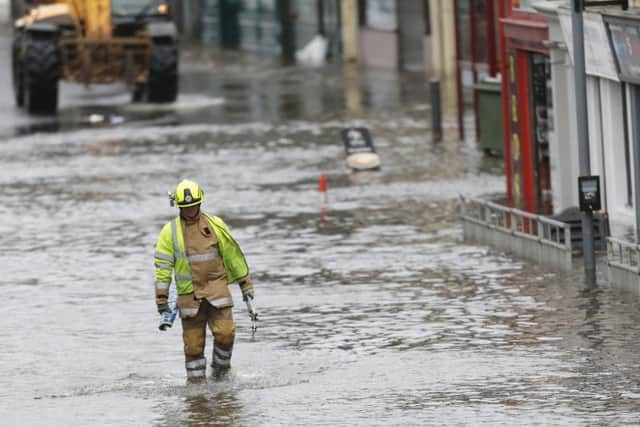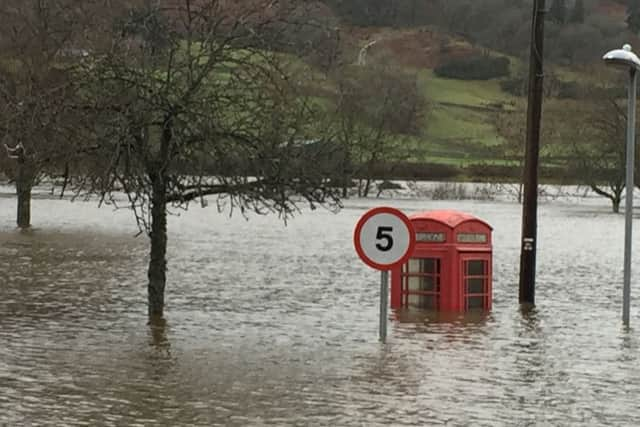Storm Frank: Nicola Sturgeon hails ‘heroic response’


Aberdeenshire, Ayrshire, Dumfries and Galloway and the Borders bore the brunt of the severe weather, which left one man dead and caused chaos for road, rail and ferry services.
Flood-hit communities around the country are still assessing the damage, with many people sheltering in makeshift accommodation or without power.
Advertisement
Hide AdAdvertisement
Hide AdScotland’s First Minister was in Newton Stewart in Dumfries and Galloway yesterday, one of the worst-affected communities, to see at first hand the aftermath of the storm.


Heavy rain continued to pour as Nicola Sturgeon visited shops and businesses hit by the deluge.
She said parts of the country had experienced the most severe flooding in living memory. Ms Sturgeon said: “This is probably the worst flooding episode that Newton Stewart and much of this region has experienced, for some people, in living memory.
“On the other side of that, the response has been heroic.
“The impact is devastating for people, it’s absolutely heartbreaking,” she said.


“Local councils, emergency services and other responders have worked tirelessly to minimise the impact on communities, ensure the safety of people, and are now working to help local areas recover.
“I offer them my deepest thanks for their efforts, which have no doubt spared us more significant damage.”
She added: “One of the reasons I’m here is so that I can see it for myself, so we can make sure we are doing everything we reasonably can to help people with that recovery.”
Homes in Newton Stewart were abandoned and a rest centre set up at Douglas Ewart High School.
Advertisement
Hide AdAdvertisement
Hide AdIn the town’s Victoria Street, local business owners were sweeping out the remains of the water from their shops.
Workers at a home decorating store were throwing damaged wallpaper and blinds into a skip.
Another skip was piled with white goods such as cookers that did not survive the flooding.
Sandbags remained outside shops as fire and rescue services pumped away water and helped residents clean up.
Large parts of the country were left under water after Wednesday’s extreme weather, which prompted the most severe, “danger to life” flood warnings to be issued.
Dozens of residents had to flee properties when rivers burst their banks and ground was washed away.Around 29,000 homes were plunged into darkness as high winds and flooding took their toll.
Police yesterday confirmed that the body of a kayaker who went missing as Storm Frank battered Scotland on Wednesday had been recovered from the River Findhorn in Moray.
Advertisement
Hide AdAdvertisement
Hide AdThe man, who was in his fifties, was found yesterday. Emergency services declared a “major incident” in the Scottish Borders when the River Tweed burst its banks and waters rose to the highest levels in 65 years.
Helicopter crews were called in to airlift 12 passengers, including two children, from a bus that became stranded in floodwater in Dailly, South Ayrshire, on Wednesday.
The Scottish Fire and Rescue Service said it had been involved in a “major multi-agency response” after the Tweed overflowed, engulfing large areas of Peebles.
Four specialist water rescue teams, police, ambulance teams, the RNLI, mountain rescue and local authority emergency planning officers were all deployed.
In Aberdeen, coastguard rescue teams helped evacuate a care home that was flooded.
Residents were evacuated from Riverside Drive in the city and moved to Norwood Hall, which was opened as a rest centre.
In Aberdeenshire, people were evacuated in Ballater and a rest centre was set up at the Victoria Barracks and nearby Aboyne Academy.
Deputy First Minister John Swinney travelled to meet flood victims in Aberdeenshire.
Advertisement
Hide AdAdvertisement
Hide AdThe Prince of Wales and the Duchess of Cornwall met local people in Ballater, which is near Balmoral. Charles and Camilla were said to have made a “spur of the moment” visit to a soup kitchen and barracks yesterday.
Residents from some parts of the flood-hit village were evacuated on Thursday.
The rain and gales left thousands of homes without power, with faults caused by wind damage and trees or other debris hitting lines.
Scottish Hydro Electric Power Distribution (Shepd) said it had made good progress in restoring power, reconnecting more than 40,000 homes. However, around 1,000 properties in the north-east and Perthshire were still without a supply last night.
The utility company said engineers have been hampered by deep floodwater, with some electricity poles washed away by the torrents and landslips making roads impassable.
“Overnight, working with Police Scotland and other agencies, engineers have restored electricity supply to properties where it was safe to do so,” a Shepd spokeswoman said.
“With water and river levels forecast to rise this morning engineers have been monitoring flood protection on key substations.”
Scottish Borders Council has set up an emergency bunker to coordinate flood operations.
Advertisement
Hide AdAdvertisement
Hide AdDeputy chief executive Jeanette McDiarmid congratulated the Peebles community, which she said has rallied to help clear up after the disaster.
“Ourselves and our partners faced an extremely challenging time during Wednesday as the effects of Storm Frank took hold,” she said. “River levels dropped gradually through the afternoon and evening, and fortunately with drier weather forecast for the next few days we can now concentrate on the clean-up.”
But as clean-up operations got under way across the country, dozens of flood warnings and flood alerts remained in place throughout Scotland.
The Scottish Environment Protection Agency (Sepa) had issued the most serious – “danger to life” – flood warning for Whitesands in Dumfries and Galloway and the River Tweed in Peebles, but these are no longer in force.
Frank, the sixth named storm of the season, came at the end of what has entered the history books as Scotland’s wettest month ever.
